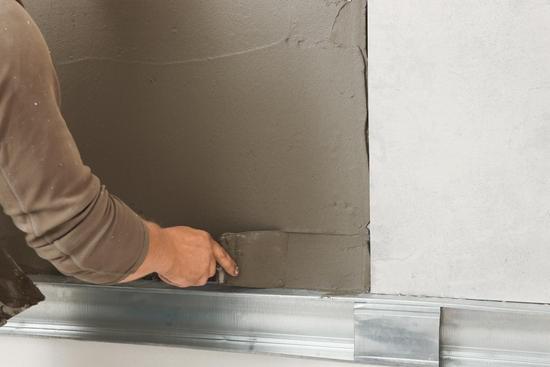Is painting your home a capital improvement? Understanding the concept of capital improvements and their significance is crucial for homeowners looking to make strategic financial decisions.
This article will delve into the criteria for determining if painting your home qualifies as a capital improvement, the financial benefits of treating painting as such, potential tax implications, and how it can increase the long-term value of your property. Additionally, we will explore the differences in treatment between leasehold improvements and capital improvements for homeowners, the process of declaring painting as a capital improvement, and important considerations and best practices for homeowners considering this approach.
Capital improvements play a vital role in the maintenance, renovation, and enhancement of residential properties. However, not all home improvement projects automatically qualify as capital improvements. In this section, we will discuss what constitutes a capital improvement and why understanding this distinction is essential for homeowners.
By thoroughly examining these topics, homeowners can gain valuable insights into how treating painting as a capital improvement can impact their finances and property value. This comprehensive guide aims to provide clarity on whether painting your home should be considered a capital improvement or not.
The Criteria for Determining if Painting Your Home Qualifies as a Capital Improvement
When determining if painting your home qualifies as a capital improvement, there are specific criteria to consider. Here are some factors that can help you decide if the painting project meets the qualifications:
- Scope of the Project: The extent of the painting project can play a role in determining if it qualifies as a capital improvement. If the painting involves more than just a simple touch-up or cosmetic enhancement, it may be considered as such.
- Long-Term Benefit: Capital improvements are intended to provide long-term benefit or value to the property. If the painting is expected to have a lasting impact, such as protecting the exterior from weather damage or increasing the lifespan of interior surfaces, it may meet this criterion.
- Significant Expense: The cost of the painting project can also be a factor. If the expenses incurred for materials and labor are substantial and contribute to enhancing the property’s value, it could be considered a capital improvement.
It’s important to note that meeting all these criteria does not guarantee that your painting project will qualify as a capital improvement. Each case is unique and should be evaluated based on its individual circumstances.
Ultimately, making informed decisions about whether your home painting project qualifies as a capital improvement can have significant financial implications and long-term benefits for your property. Therefore, it’s crucial to understand these criteria and seek professional advice if necessary before moving forward with such projects.
The Financial Benefits of Treating Painting as a Capital Improvement
When it comes to home improvement projects, the financial benefits of treating painting as a capital improvement can be significant. Here are some key reasons why painting your home as a capital improvement can have positive financial implications:
- Depreciation: By treating painting as a capital improvement, you may be able to depreciate the cost of the project over time. This can provide tax benefits and reduce your taxable income.
- Increased Property Value: Painting your home can enhance its curb appeal and overall value. When treated as a capital improvement, the cost of the painting project can be added to the basis of your property, which can ultimately increase its value when it comes time to sell.
- Cost Recovery: Capital improvements are typically seen as long-term investments in the property. As such, the costs associated with these improvements can often be recovered when you sell the property.
It’s important to note that while there are potential financial benefits to treating painting as a capital improvement, it’s essential to consult with a tax professional or financial advisor to fully understand how this decision may impact your individual financial situation.
Overall, by viewing painting your home as a capital improvement rather than a simple repair or maintenance expense, you may be able to reap several financial advantages both in the short term and long term.
The Potential Tax Implications of Painting Your Home as a Capital Improvement
When considering whether painting your home qualifies as a capital improvement, it’s important to understand the potential tax implications of this decision. While there are financial benefits to treating painting as a capital improvement, there are also important considerations related to taxes.
Depreciation and Tax Benefits
One potential tax implication of treating painting as a capital improvement is the ability to depreciate the cost of the paint job over time. When an expense is classified as a capital improvement, it can be depreciated over a number of years, allowing for tax benefits over an extended period. This can result in lower taxable income in the years following the improvement.
Capital Gains and Selling Your Home
Another important tax consideration when painting your home as a capital improvement is the impact on potential capital gains taxes when you sell your home. Any increase in the value of your home due to capital improvements, including painting, can affect your tax liability when you sell. Understanding how this increase in value may impact your future tax obligations is essential for making informed decisions about treating painting as a capital improvement.
Tax Professional Guidance
Given the potential complexities involved in determining the tax implications of painting your home as a capital improvement, it’s advisable to seek guidance from a qualified tax professional. They can provide personalized advice based on your specific financial situation and help ensure that you fully understand the tax implications before making any decisions regarding how to categorize home improvements.
Long-Term Value
The long-term value of painting your home as a capital improvement cannot be understated. Not only does a fresh coat of paint increase the aesthetic appeal of your home, but it can also significantly increase its market value.
The curb appeal and overall condition of a property are key factors that potential buyers consider when making a purchase decision. By treating painting as a capital improvement, homeowners can make a smart investment in their property that yields substantial returns in the long run.
Enhanced Aesthetic Appeal
One of the most obvious ways that painting as a capital improvement can increase the value of your home is through enhanced aesthetic appeal. A well-maintained and visually appealing exterior can greatly impact potential buyers’ first impression of your property. Additionally, fresh interior paint can create a clean and updated look, which is highly desirable to prospective buyers.
Protection and Preservation
In addition to improving the appearance of your home, painting as a capital improvement also serves to protect and preserve its structure. Exterior paint acts as a barrier against harsh weather conditions, preventing moisture from seeping into the walls and causing damage. Interior paint also helps to protect walls from wear and tear, ultimately preserving the overall condition of the property.
Increased Market Value
Ultimately, by treating painting as a capital improvement, homeowners are investing in the longevity and marketability of their property. The increased curb appeal, protection, and overall improved condition resulting from fresh paint all contribute to an increased market value for the home.
Whether you are planning to sell in the near future or simply want to build equity in your property for the long term, painting as a capital improvement is an effective way to enhance the value of your home.
Differences in Treatment
When it comes to understanding capital improvements, it’s important for homeowners to distinguish between leasehold improvements and capital improvements. Leasehold improvements typically refer to any alterations or additions made to rental property by a tenant or landlord, with the intention of customizing the space for the needs of a tenant’s business operations.
On the other hand, capital improvements pertain to the enhancements or additions made to a property that are intended to extend its useful life, increase its value, or adapt it to new uses.
For homeowners, the distinction between leasehold improvements and capital improvements is significant when it comes time to consider tax implications and long-term value. While both types of improvement can add value to property, distinguishing between them correctly can mean different treatment in terms of taxation and accounting. Therefore, understanding this difference is essential for homeowners looking to maximize their investment in home improvement projects.
In addition to taxation and accounting differences, leasehold improvements and capital improvements also require different documentation and considerations when it comes time for selling or refinancing a home. Potential buyers or lenders may have different requirements and perceptions regarding these types of improvements when evaluating the overall value and condition of a property. Therefore, understanding how these differences in treatment impact the overall financial picture is crucial for homeowners considering painting their home as a capital improvement project.
| Leasehold Improvements | Capital Improvements |
|---|---|
| Customizations made by tenants or landlords on rental properties | Enhancements made by homeowners intending to extend useful life or increase property value |
| Different tax implications and accounting treatment | Potential long-term benefits in increasing property value |
| May influence sale price or refinancing considerations differently than capital improvements | May require specific documentation for future resale or refinancing purposes |
The Process of Declaring Painting as a Capital Improvement
When it comes to declaring painting as a capital improvement, there are specific steps and criteria that homeowners need to be aware of. A capital improvement is any addition or alteration made to a home that increases its overall value, prolongs its useful life, or adapts it to new uses. In the case of painting, it can qualify as a capital improvement if it meets certain criteria.
First and foremost, the quality of the paint used is crucial when declaring painting as a capital improvement. Using high-quality and durable paint that will extend the life of the property and protect it from elements is essential. Additionally, the type of paint used should be suitable for the specific surface being painted in order to ensure long-lasting results.
Another important factor in declaring painting as a capital improvement is documenting the process and keeping detailed records of all expenses related to the project. This includes receipts for materials, labor costs, and any other expenses incurred during the painting project. Proper documentation is key when justifying painting as a capital improvement in case of an audit or if there are any tax implications.
It’s also important for homeowners to consult with a tax professional or accountant to fully understand the tax implications and benefits of treating painting as a capital improvement. They can provide guidance on how to properly declare painting as a capital improvement on tax returns and ensure compliance with any applicable regulations. By doing so, homeowners can maximize their financial benefits while also increasing the long-term value of their property.
| Criteria for Declaring Painting as a Capital Improvement | Importance |
|---|---|
| Quality of Paint | Ensures prolongation of property’s life |
| Documentation | Justification in case of audit or for tax purposes |
| Tax Professional Consultation | Maximizes financial benefits and ensures compliance |
Important Considerations and Best Practices for Painting Your Home as a Capital Improvement
In conclusion, understanding the concept of capital improvements and how they can benefit homeowners is crucial when it comes to making decisions about home maintenance and improvement projects. By treating painting your home as a capital improvement, you may be able to take advantage of certain financial benefits and potentially increase the long-term value of your property.
However, it is important to carefully consider the criteria for declaring painting as a capital improvement and understand the potential tax implications before proceeding with the project.
When determining whether painting your home qualifies as a capital improvement, it is essential to consider factors such as the extent of the work, its impact on the overall value of the property, and whether it enhances the functionality or longevity of the asset. Additionally, consulting with a tax professional or financial advisor can provide valuable insights into the potential tax implications of treating painting as a capital improvement.
Furthermore, homeowners should also be aware of any differences in treatment between leasehold improvements and capital improvements, as well as be familiar with the process of declaring painting as a capital improvement. By following best practices and considering important considerations outlined in this article, homeowners can make informed decisions about whether to treat painting their homes as a capital improvement, ultimately optimizing the financial and long-term value benefits from such projects.
Frequently Asked Questions
Does Painting Count as Capital Improvement?
Painting can be considered a capital improvement if it is intended to prolong the life of the property, increase its value, or adapt it for a new use. This typically includes painting the exterior of a building, as well as significant interior painting projects.
However, routine maintenance painting, such as touching up scuff marks or refreshing a room with the same color, may not qualify as a capital improvement.
Is Repainting a Repair or Improvement?
Whether repainting is classified as a repair or an improvement depends on the scope and purpose of the project. If the repainting is simply restoring the property to its original condition without substantially adding to its value or prolonging its life, then it may be considered a repair.
On the other hand, if the repainting involves using higher quality materials or changing the color for aesthetic purposes, it could be categorized as an improvement.
Does Painting a House Add to Cost Basis?
In some cases, painting a house can potentially add to its cost basis if it is part of a larger and qualifying home improvement project that adds value to the property. Generally, improvements that add to the cost basis are those that have a useful life of more than one year and contribute to increasing the property’s value or extending its life.
It’s important to consult with tax professionals or refer to IRS guidelines for specific details on how various expenses affect cost basis calculations.

I’m thrilled to have you here as a part of the Remodeling Top community. This is where my journey as an architect and remodeling enthusiast intersects with your passion for transforming houses into dream homes.





